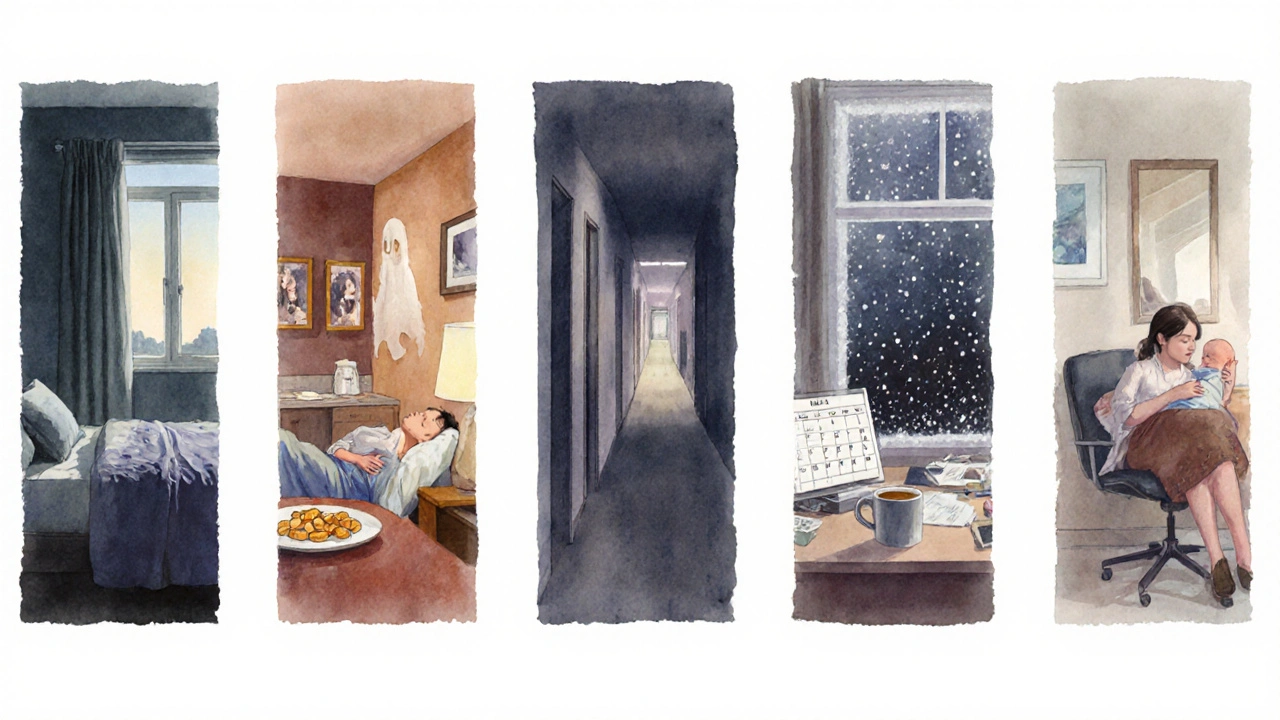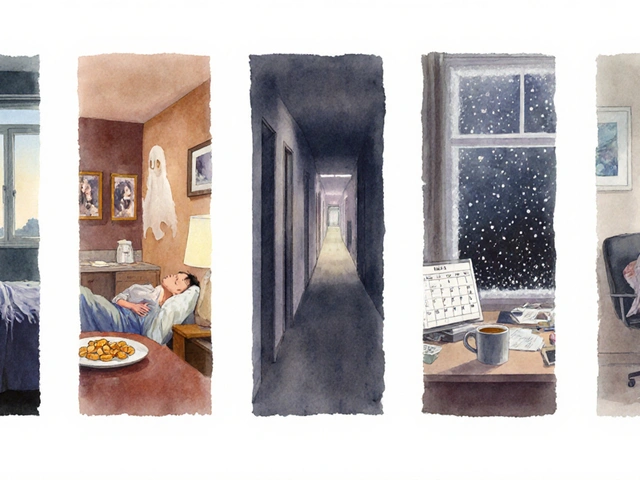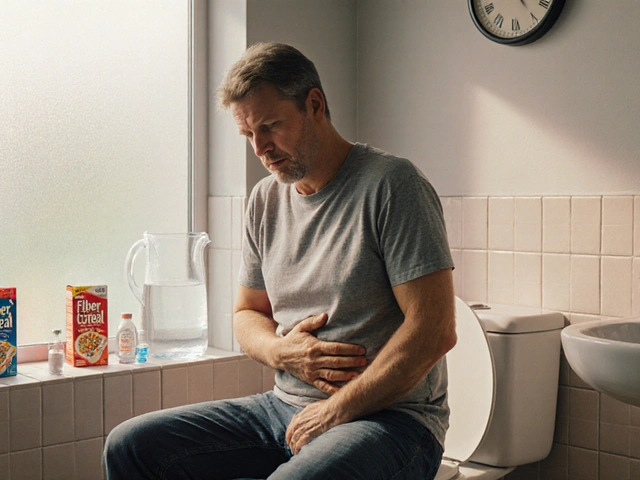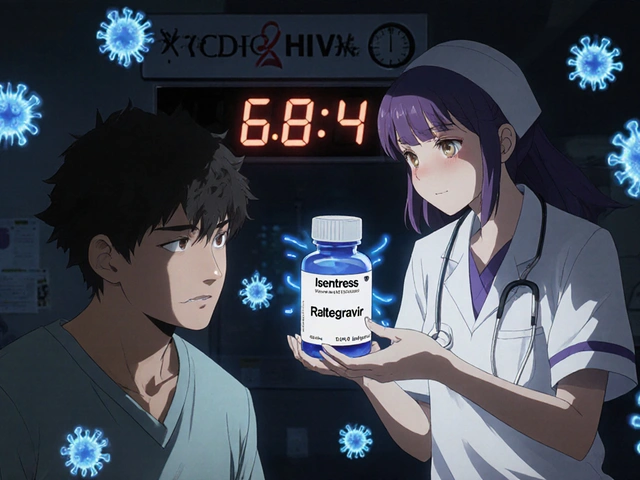MDD Subtype Symptom Checker
This tool helps identify which subtype of Major Depressive Disorder (MDD) might align with your symptoms based on DSM-5 diagnostic criteria. Note: This is for educational purposes only and does not replace professional medical diagnosis.
Symptom Assessment
Select symptoms you're experiencing. Click on any symptom to toggle its selection.
Melancholic Features
Atypical Features
Psychotic Features
Seasonal Pattern
Postpartum Onset
Persistent
Potential MDD Subtypes
Most Likely Subtype:
Additional Possible Subtypes:
Important Note: This tool is for educational purposes only and does not replace a professional medical evaluation. If you're experiencing severe symptoms, please seek immediate help from a mental health professional.
When you hear the term major depressive disorder, you might picture a single, uniform illness. In reality, clinicians split MDD into several distinct sub‑types, each with its own pattern of symptoms, triggers, and treatment preferences. This guide walks through every major type, shows how they differ, and gives practical tips for anyone navigating a diagnosis.
Key Takeaways
- MDD isn’t one‑size‑fits‑all; sub‑types include melancholic, atypical, psychotic, seasonal, postpartum, and chronic forms.
- Each type has specific diagnostic clues that help clinicians choose the most effective therapy.
- Understanding your subtype can shorten the trial‑and‑error period for medication and psychotherapy.
- Risk factors such as genetics, stress, and hormonal changes influence which subtype may develop.
- Early intervention, lifestyle changes, and tailored treatment improve long‑term outcomes.
What Is Major Depressive Disorder?
Major Depressive Disorder is a mood disorder characterized by persistent sadness, loss of interest, and a range of physical and cognitive symptoms that impair daily functioning. According to the DSM‑5, a diagnosis requires at least five of nine core symptoms to be present for two weeks or more, with at least one symptom being either depressed mood or anhedonia.
Worldwide, roughly 264 million people experience MDD at some point, making it a leading cause of disability. While the diagnostic checklist looks the same for everyone, the way symptoms cluster often reveals a specific subtype.
How the DSM‑5 Classifies MDD Subtypes
The Diagnostic and Statistical Manual of Mental Disorders, Fifth Edition (DSM‑5) adds specifiers to the standard MDD diagnosis. These specifiers signal particular symptom patterns, illness course, or associated features. Clinicians use them to tailor treatment and to communicate prognosis.
Common specifiers include:
- Melancholic features
- Atypical features
- Psychotic features
- Seasonal pattern
- Peripartum onset
- Persistent depressive disorder (formerly dysthymia) when symptoms last two years or more
Below we dive into each major type, highlighting what sets it apart.

Major Types of MDD
Melancholic Depression
Melancholic depression is marked by a profound loss of pleasure (anhedonia) and a distinct quality of sadness that feels “empty” or “heavy.” Key indicators include early morning awakening, psychomotor agitation or retardation, and excessive guilt that is not proportional to reality.
Patients often report that even positive events fail to lift their mood. Biological studies show heightened cortisol levels and reduced activity in the brain’s reward circuitry, suggesting a stronger physiological component than in other subtypes.
Atypical Depression
Atypical depression flips many melancholic signs on their head. Mood can improve with positive events, and sufferers experience significant weight gain or increased appetite, hypersomnia, and a heavy “leaden” feeling in the limbs.
Seasonal changes often trigger or worsen this type, and it frequently co‑occurs with anxiety disorders. Studies link atypical depression to heightened inflammatory markers, indicating a possible immune‑system involvement.
Psychotic Depression
Psychotic depression combines severe depressive symptoms with delusions or hallucinations. The psychotic content usually mirrors the mood-e.g., guilt‑filled delusions (“I am worthless”) or paranoid ideas (“Everyone is out to get me”).
This subtype carries a higher risk of suicide and often requires a combination of antidepressants and antipsychotics, or electroconvulsive therapy (ECT) when medication alone fails.
Seasonal Affective Disorder (SAD)
Seasonal affective disorder (SAD) follows a predictable pattern, typically emerging in the fall or winter when daylight hours shrink. Symptoms mirror major depression but are accompanied by carbohydrate cravings, weight gain, and oversleeping.Light‑therapy boxes delivering 10,000 lux for 30 minutes each morning have robust evidence for reducing SAD severity.
Postpartum (Peripartum) Depression
Postpartum depression occurs within four weeks of childbirth but can start during pregnancy (peripartum). Hormonal fluctuations, sleep deprivation, and the stress of new parenthood converge to create classic depressive symptoms, often with intrusive thoughts about harming the baby.
Screening tools like the Edinburgh Postnatal Depression Scale (EPDS) help clinicians catch the condition early. Both psychotherapy (especially CBT and interpersonal therapy) and certain antidepressants are considered safe for breastfeeding mothers.
Chronic / Persistent Depressive Disorder
When depressive symptoms linger for at least two years without a full remission, the condition is termed persistent depressive disorder (formerly dysthymia). Individuals may report low‑grade sadness, poor self‑esteem, and chronic fatigue, yet function at a baseline level.
Because the intensity is milder than episodic MDD, patients often go undiagnosed for years. Treatment typically combines low‑dose antidepressants with long‑term psychotherapy focused on skill‑building.
Comparing the Subtypes
| Subtype | Core Symptom Pattern | Typical Triggers | First‑Line Treatment |
|---|---|---|---|
| Melancholic | Severe anhedonia, early morning awakening, psychomotor changes | Stressful life events, biological predisposition | SSRIs or SNRIs + psychotherapy (CBT) |
| Atypical | Leaden limbs, hypersomnia, weight gain, mood reactivity | Seasonal changes, chronic stress | MAO‑I (e.g., phenelzine) or SSRIs + lifestyle modification |
| Psychotic | Delusions/hallucinations aligned with depressive mood | Severe depressive episode, genetic vulnerability | Antidepressant + antipsychotic or ECT |
| Seasonal (SAD) | Winter‑time low mood, oversleeping, carbohydrate cravings | Reduced daylight, latitude > 40° | Light‑therapy + SSRIs if needed |
| Postpartum | Depression plus intrusive thoughts about infant, sleep loss | Hormonal shift after birth, lack of support | CBT or interpersonal therapy + sertraline (breast‑feeding safe) |
| Persistent | Low‑grade sadness >2years, chronic fatigue | Early‑life adversity, ongoing stressors | Low‑dose SSRI + long‑term psychotherapy |
Diagnosing the Right Subtype
Clinicians follow a stepwise approach:
- Conduct a comprehensive clinical interview, focusing on symptom chronology and intensity.
- Administer standardized rating scales - PHQ‑9 for severity, HAMD for specific features, EPDS for postpartum screening.
- Match reported symptoms to DSM‑5 specifiers; note any psychotic content or seasonal pattern.
- If needed, run laboratory tests (thyroid panel, vitamin D) to rule out medical mimics.
- Consider neuroimaging or EEG only in atypical cases where psychosis or neurological disease is suspected.
Accurate subtyping shortens the “trial‑and‑error” phase of medication selection and informs psychotherapy focus (e.g., interpersonal therapy for postpartum vs. CBT for melancholic).

Tailored Treatment Strategies
While antidepressants form the backbone of MDD care, the choice of drug class often hinges on subtype:
- Melancholic: SSRIs (fluoxetine, sertraline) or SNRIs (venlafaxine) work well; augmentation with bupropion can counteract psychomotor slowing.
- Atypical: MAO‑Is like phenelzine have the strongest evidence, though newer SSRIs combined with lifestyle changes are increasingly used.
- Psychotic: Immediate addition of atypical antipsychotics (e.g., aripiprazole) plus an SSRI; ECT remains an option for refractory cases.
- SAD: Daily bright‑light exposure (10,000 lux) for 30minutes; if insufficient, add an SSRI.
- Postpartum: Sertraline or escitalopram (both considered safe during lactation); psychotherapy focuses on mother‑infant bonding.
- Persistent: Low‑dose SSRIs for durability; long‑term CBT or acceptance‑commitment therapy (ACT) to build coping skills.
Adjunctive interventions-exercise, sleep hygiene, and nutrition-benefit all subtypes. Regular follow‑up every 4-6weeks during the acute phase helps adjust dose or switch strategies promptly.
Living With a Specific Subtype: Practical Tips
Understanding which subtype you fit can guide daily habits:
- Melancholic: Keep a strict sleep‑wake schedule; schedule rewarding activities even when motivation wanes.
- Atypical: Focus on balanced meals with complex carbohydrates; incorporate gentle morning walks to combat lethargy.
- Psychotic: Maintain a medication routine; involve a trusted family member to monitor for worsening delusions.
- SAD: Invest in a light‑therapy box; maximize daylight exposure by walking during lunch breaks.
- Postpartum: Lean on partner/family for infant care; use infant‑feeding support groups.
- Persistent: Set small, achievable goals each week; track mood trends to spot early signs of relapse.
Self‑monitoring apps that record mood, sleep, and activity can provide data to discuss with your clinician, helping fine‑tune treatment.
Frequently Asked Questions
Can you have more than one subtype at the same time?
Yes. It’s common for a person with melancholic features to also experience seasonal worsening, or for postpartum depression to show atypical symptoms. Clinicians note each specifier because treatment may need to address multiple mechanisms.
How long does it take to see improvement after starting medication?
Most antidepressants begin to lift mood after 2-4weeks, but full remission can take 8-12weeks. If you have a psychotic or melancholic subtype, your doctor may add another agent to speed up response.
Is psychotherapy enough for mild atypical depression?
Mild to moderate atypical depression often responds well to CBT or interpersonal therapy alone, especially when combined with regular exercise and sleep regulation. Medication is added if symptoms persist beyond 8-12 weeks.
Can lifestyle changes replace medication for seasonal affective disorder?
Light‑therapy is the most evidence‑based non‑pharmacological option. Some people achieve remission with bright‑light exposure, outdoor activity, and vitamin‑D supplementation, but if mood doesn’t improve within a few weeks, a low‑dose SSRI is recommended.
What should I do if I suspect I have psychotic depression?
Seek immediate professional help. Psychotic symptoms increase suicide risk, and treatment usually involves a combination of antidepressants, antipsychotics, and possibly ECT. Do not stop any medication abruptly without medical guidance.
Next Steps
If you recognize the pattern of one of these subtypes, schedule an appointment with a mental‑health professional. Bring a symptom diary, note any seasonal or hormonal changes, and be ready to discuss family history. Early, subtype‑specific treatment gets you back to feeling like yourself faster.
Remember, depression isn’t a personal failure-it’s a medical condition with many faces. Knowing which face you’re dealing with is the first powerful step toward recovery.









Write a comment
Your email address will be restricted to us